Earlier this week, Todd Kenreck sat down with his wife Meagan, as well as Makenzie de Armas and Dennis Aldea, the creators of the One on One D&D podcast, to talk about how to play D&D with one Dungeon Master and just one player.
Gathering a full party of three or more players to play D&D can be an arduous endeavor. Maybe you don’t have enough people interested in playing with you, or maybe your potential players’ schedules just don’t align properly. Perhaps—if you’re reading this in April 2020—you can’t leave your home and you want to play D&D with your romantic partner, or your roommate. This style of play, sometimes called one-on-one D&D or duet-style D&D, is a great way to play without the challenge of assembling a full adventuring party.
Even if you’re just curious about this atypical style of playing D&D, read on. We’ll discuss best practices for playing duet D&D, good starter one-on-one adventures that you can try out in an evening, and tips for creating your own duet adventures. Let’s go on an adventure—alone!
Playstyle Tips for Duet Play
The best moments in Todd’s conversation with Meagan, Makenzie, and Dennis occurred when one of them dropped a nugget of one-on-one D&D wisdom and the others all exclaimed how true it was. Let’s start by sharing some of our panelist’s best tips for playing D&D with just one player.
Talk to Each Other. Communication is hard, and communicating openly with one single person can be the hardest thing of all. Nevertheless, it’s absolutely vital that you are able to discuss anything with your fellow duet player. If you don’t feel comfortable expressing your concerns, sharing your favorite moments, or just being vulnerable with your friend, your campaign might be doomed to failure. On the flip side, being open and honest with one another is a great way to strengthen your friendship, even outside of playing D&D!
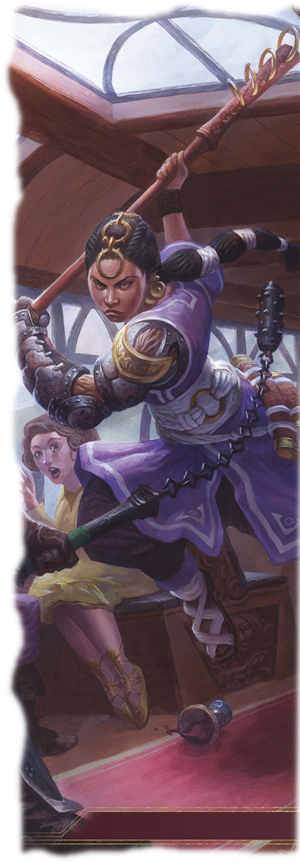 Plan Together. On a related note, one thing you should always discuss with your game partner is what things you both find fun. Some D&D players can “suck it up” and slog through an unfun dungeon if they know that their fellow party members are having fun, but this is a miserable way to play D&D when you’re the only player. The DM doesn’t have to share all of their notes with their game partner in order to make the game fun, but having a Session Zero to discuss things that you’d like to see in your campaign is vitally important in duet play. Do you like lots of combat? Lots of social interaction? A mix of everything? Do you not like emotionally intense scenes, or scenes of graphic violence? Discuss those things up front!
Plan Together. On a related note, one thing you should always discuss with your game partner is what things you both find fun. Some D&D players can “suck it up” and slog through an unfun dungeon if they know that their fellow party members are having fun, but this is a miserable way to play D&D when you’re the only player. The DM doesn’t have to share all of their notes with their game partner in order to make the game fun, but having a Session Zero to discuss things that you’d like to see in your campaign is vitally important in duet play. Do you like lots of combat? Lots of social interaction? A mix of everything? Do you not like emotionally intense scenes, or scenes of graphic violence? Discuss those things up front!
You might even want to revisit your Session Zero every few sessions, just to make sure you’re both still on the same page.
How Many Adventurers Are There? This might seem like a silly question to pose in a game of one-on-one D&D, but it’s not uncommon for players to play more than one character. This is made even easier thanks to the Sidekick rules presented in the D&D Essentials Kit. These sidekick rules essentially let one player play a whole D&D party, sort of how you control an entire party in computer RPGs like Baldur’s Gate. Is this fun for you? Or does it defeat the purpose of duet play?
Similarly, ask about player pets. Would you allow your player to have a pet displacer beast? Or would you require that player to play a pet class like a Beast Master ranger, Pact of the Chain warlock (both from the Player’s Handbook), or Battle Smith artificer (from Eberron: Rising from the Last War) in order to have an animal sidekick?
Modify Encounters. Encounter building has always been more art than science, but that becomes more true than ever when you have a party of one. Without a full party to provide a safety net for your character, it's easy to get overwhelmed by monsters—especially when you're outnumbered even two-to-one or three-to-one. If you're running an adventure designed for a party of characters, like one of the official D&D hardcovers, the DM will need to do some work to modify the encounters so that the single character doesn't get pulverized. The D&D Beyond Encounter Builder is great for that; just enter your party size as having only 1 character and add in the monsters from the original encounter. Then you can futz with the number of (and even type of) monsters present until the encounter's difficulty is rated as Hard. That's a great starting point, and from here the DM can start finessing the difficulty of your encounters to best suit the player's power level and tactical skill.
Rethink Death and Dying. D&D becomes very dangerous when you don’t have a balanced party to back you up. Once you fall unconscious, you don’t have any way of being healed back up—all you can do is hope that you pass three death saving throws before you fail three. And if fortune doesn’t smile upon you (or if your enemies are vicious and stab you while you’re bleeding out) then your adventure will come to a quick and messy end. Makenzie and Dennis suggested using the Injuries rules presented in chapter 9 of the Dungeon Master’s Guide to soften the consequences of failing three death saving throws in order to keep the adventure going.
In this system, your character doesn’t die when they fail three death saves, unless you and your DM agree that it’s implausible for them to survive or just narratively appropriate that your hero’s adventure comes to an end. Instead, they fall unconscious and awaken later, now with an injury from the Lingering Injuries table. You may have been captured or left for dead, but you’ve probably also lost all of your precious gear—which for some adventurers is a fate worse than death anyway.
Don’t Stay in One Role for Too Long. When you’re playing D&D one-on-one, it can be stressful to always be the Dungeon Master, or to always be the player. To take the stress off you and your fellow player, try swapping out roles when you stop having fun in your current role. You may want to switch to a different campaign when you switch roles, or focus on a different part of the same campaign you’ve been playing the whole time.
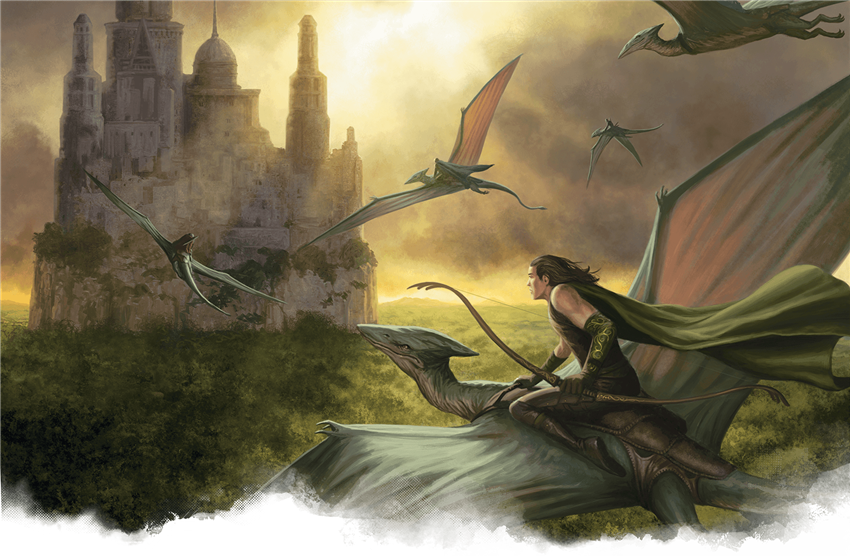
Adventures for Duet Play
If you want to play D&D duet style, you’re going to need an adventure. This can be tricky, since the overwhelming majority of D&D adventures are designed for one Dungeon Master and a group of three to five other players. Ultimately, the best way to play one-on-one is to create the adventures yourself. This lets you tailor your challenges and story moments specifically to the needs and wants of you and your fellow player. Creating duet adventures takes a very different skill set than creating adventures for a whole party of characters, but you’ll get better at making adventures the more you do it.
Nevertheless, there are two ways to learn to do something. The first is to learn by doing, as we explained above. The second is to learn by example. Reading adventures is the way all the good D&D writers in the world learned how to create engaging adventures of their own. Start by reading. There aren’t nearly as many duet adventures in the world as there are party-based ones, but that doesn’t mean there aren’t any. And in fact, there are a couple really great ones. Here are two duet adventures that will give you a great crash course in how to write an adventure that you can play with just one other person.
First Blush
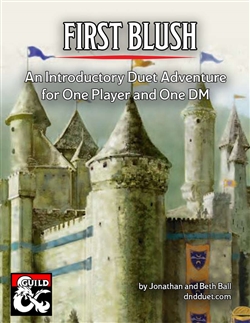 The pressures of one’s birth negotiate a difficult harmony with one’s destiny. A new path might be directly ahead, but how is one to know?
The pressures of one’s birth negotiate a difficult harmony with one’s destiny. A new path might be directly ahead, but how is one to know?
First Blush is a classic, pioneering adventure of the one-on-one adventure genre and a DMs Guild Mithral Best Seller. The term “duet adventure” stems from the name of the authors Beth and Jonathan Ball’s blog, DnD Duet. This blog includes more than just links to one-on-one adventures for you to buy. If this article has got you interested in playing D&D in a one-on-one setting, their website includes more articles that go in-depth on how to help you run a great duet session of D&D.
But what about the adventure? First Blush is a one-shot adventure designed to be played with one DM and one player, in which the player character escapes from confinement in a castle and discovers an ancient secret that threatens to change their life forever. First Blush leans into fantasy novel tropes in a way that party-based D&D adventures can’t; this is a singular story with one character as a protagonist. This gives you the chance to have a full-fledged Campbellian hero’s journey in your duet game, which some D&D players might be longing for, if they’ve only played in party-based games.
This adventure is pay-what-you-want, and while it functions perfectly well as a one-shot adventure, it also can be used as the launching point for a trilogy of stories continued in its sequels: Second Glance and Third Time’s the Charm.
The Blood Hunter
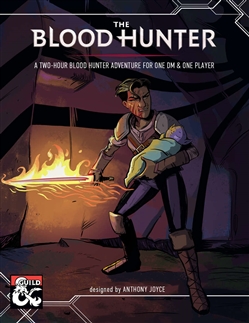 You are a Blood Hunter, feared by even the most vile monstrosities throughout Faerûn. Commoners shut their windows and lock their doors as you approach, and small children cry at the sight of your unnatural demeanor. Such is the burden of life as a Blood Hunter.
You are a Blood Hunter, feared by even the most vile monstrosities throughout Faerûn. Commoners shut their windows and lock their doors as you approach, and small children cry at the sight of your unnatural demeanor. Such is the burden of life as a Blood Hunter.
The Blood Hunter is a one-shot duet adventure is inspired by Matthew Mercer’s blood hunter class and the Claret Orders described in Explorer’s Guide to Wildemount. This adventure, written by Anthony Joyce, has become an instant classic on the DMs Guild, earning an impressive Gold Best Seller medal in its first month of release. While this adventure is less explicitly personal than First Blush, it packs in the thrills by casting you as a 5th-level blood hunter hunting a werewolf terrorizing Phandalin, the well-known setting of the D&D Starter Set adventure Lost Mine of Phandelver.
Because of the game’s more personal nature, it feels confident delving into game mechanics that might cause a party-based game to drag. The protagonist of this adventure possesses some skill in the art of hemocraft, and can use the blood of their enemies to create alchemical potions that grant them volatile powers. While deliberating over what type of potion to make might not go over well in a game where four other players all want to take their turn, this sort of minute tactical decision makes perfect sense in a one-on-one setting.
Your Own Adventure
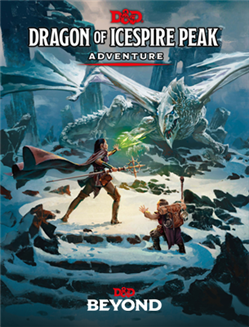 Take a look at these two adventures, or search for your own duet adventures. Read through them carefully and try running at least one of them for a friend. They’re short, and—if you’re reading this in April 2020, anyway—you’re self-isolating at home, anyway. Get yourself set up to play D&D online with a friend and run one of these 2 to 4 hour adventures. You can even try borrowing ideas from the short quests of the D&D Essentials Kit adventure Dragon of Icespire Peak. While you're there, put the Sidekick rules from that adventure in your duet D&D toolkit; even if your player doesn't want to have a sidekick all the time, maybe one story you want to tell will call for a secondary character that helps the hero.
Take a look at these two adventures, or search for your own duet adventures. Read through them carefully and try running at least one of them for a friend. They’re short, and—if you’re reading this in April 2020, anyway—you’re self-isolating at home, anyway. Get yourself set up to play D&D online with a friend and run one of these 2 to 4 hour adventures. You can even try borrowing ideas from the short quests of the D&D Essentials Kit adventure Dragon of Icespire Peak. While you're there, put the Sidekick rules from that adventure in your duet D&D toolkit; even if your player doesn't want to have a sidekick all the time, maybe one story you want to tell will call for a secondary character that helps the hero.
If you enjoyed the experience and want to create your own duet adventures to play, start by writing down a few of your thoughts after the game. Come back to those thoughts later and jot down a few story ideas. Start by building these ideas out into a scene-by-scene (or area-by-area) outline. If you’ve completed an outline, that’s all you need to run an adventure! You’ll need more meat on those bones if you want to publish it on the DMs Guild, but a solid structure is all you need to run a game of D&D, even in this unfamiliar format. Keep the advice above in mind while playing, and you and your friend will have a great time.
Have you ever played D&D one-on-one before? What advice would you give to people who want to try playing this way? Let us known in the comments!
Create A Brand-New Adventurer Acquire New Powers and Adventures Browse All Your D&D Content
 James Haeck is the lead writer for D&D Beyond, the co-author of Waterdeep: Dragon Heist, Baldur's Gate: Descent into Avernus, and the Critical Role Explorer's Guide to Wildemount, a member of the Guild Adepts, and a freelance writer for Wizards of the Coast, the D&D Adventurers League, and other RPG companies. He lives in Seattle, Washington with his fiancée Hannah and their animal companions Mei and Marzipan. You can find him wasting time on Twitter at @jamesjhaeck.
James Haeck is the lead writer for D&D Beyond, the co-author of Waterdeep: Dragon Heist, Baldur's Gate: Descent into Avernus, and the Critical Role Explorer's Guide to Wildemount, a member of the Guild Adepts, and a freelance writer for Wizards of the Coast, the D&D Adventurers League, and other RPG companies. He lives in Seattle, Washington with his fiancée Hannah and their animal companions Mei and Marzipan. You can find him wasting time on Twitter at @jamesjhaeck.








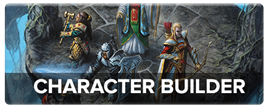
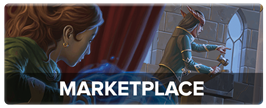
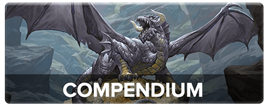
-
View User Profile
-
Send Message
Posted Apr 22, 2020Seriously, how can you write so fast??? :D I look forward to reading this tonight.
-
View User Profile
-
Send Message
Posted Apr 22, 2020I've done this one-on-one games, albeit not in D&D. They can really be a lot of fun, but here's the advice I would offer those considering it:
Have fun!
-
View User Profile
-
Send Message
Posted Apr 22, 2020Me and my grandma have been doing one on one games for maybe a little over a year now. Her main character is her maxed out 20th lvl bard named Brigit. This is her:
https://ddb.ac/characters/13708801/5hu4cn
We are doing a heavily modified Tomb of Annihilation she's currently in the lost city basically befriending all the kobolds and grungs and building an army shadow of mordor style.
Me and both of my parents both have one on one games too since the virus has us all stuck at home. My dad plays a half-drow and his game is heavily inspired by Morrowind (Dagoth Ur is the bbeg and the tribunal is there and that's it, but anyways we aren't selling it so we can do what we want ;p) and my mom has three games (one in 1363 forgotten realms, one in eberron and one in ravnica)
-
View User Profile
-
Send Message
Posted Apr 22, 2020This is a great article. Thank you for all of the amazing content!
-
View User Profile
-
Send Message
Posted Apr 22, 2020I love how you guys D&D as a family! :D
How did you get your grandmother interested in the game?
-
View User Profile
-
Send Message
Posted Apr 22, 2020I really like the pre-written adventure books of D&D, is there any way those can be easily scaled to fit a one-on-one player style? Has anyone run a pre-written campaign one-on-one? Let me know :D thanks in advance!
-
View User Profile
-
Send Message
Posted Apr 22, 2020Adapting adventures designed for party play is challenging, but one good way to do it is to use the D&D Beyond Encounter Builder. Just set your party size to only one character, insert the monsters from the encounter in the book that you're looking at. Then you can futz around with the number of monsters (or even the type of monsters) until the encounter's level of difficulty is about Hard for one character.
-
View User Profile
-
Send Message
Posted Apr 22, 2020Thank you very much for answering! Will definitly try this method!
-
View User Profile
-
Send Message
Posted Apr 22, 2020Hey Robin! Interesting to see that you're running a heavily modified version of ToA. Question: how do you make this adventure possible for one player? I'm also interested in running such pre-writtend adventures just for my partner, but kinda stuck on how to do it.
Thanks in advance man!! Wholesome story you got here :D
-
View User Profile
-
Send Message
Posted Apr 22, 2020My grandmother has always been into faeries and Irish mythology and she lives in a home and I haven’t been able to come in in person for virus reasons but I check in by FaceTime
we started because she wanted to have something we did together while I would wheel her to appointments as well as I would just come down and be like “which character u wanna do today? :3”
-
View User Profile
-
Send Message
Posted Apr 22, 2020Oh oops the last thing I posted was in response to you I forgot to hit reply I think oop
-
View User Profile
-
Send Message
Posted Apr 22, 2020Thanks! We added the sidekicks in. (she loves pickled pete very much) she sometimes also makes friends along the way but we limit the npcs to two npc helpers for combat so as not to bog up combat. She's level 20 so to be honest she's breezed through the jungle and animal friendship came in BIG handy because dinosaurs are beasts ;;3
she had been brought back from the dead before so she's got a time limit but that's about it she's probs gonna save toril single-handedly within the first two tendays of the curse. Acererak had better hide.
-
View User Profile
-
Send Message
Posted Apr 22, 2020I did this recently with one of the introductory Wildemount adventures. I ran a friend through it in a 1:1 game, had him one extra level up at the start (due to a small adventure prior to starting the module) and it worked out perfectly. Using the encounter builder I could tone down the number of enemies to reasonable amounts, and adjust stats for stronger opponents to match a weaker enemey's stat block.
It took a little bit, but I found the process to be pretty fun, honestly. This is also the first time I've DMed D&D (5E or otherwise), though I have a tiiiiny bit of experience running other systems, and I felt like going through the module that finely really helped me get into things and understand the flow of the adventure.
Also, I'm super happy to see this article, and I'm excited to give the video watch a little later today. Running a 1:1 game has been incredibly fun, gone far smoother than I would have expected, and has been a very cool way to get into DMing. I've enjoyed it so much, in fact, that I wonder if I'll end up preferring it as a DM. I'm also happy to see this article here, because honestly it was a bit difficult to find tips, or at least tips that went beyond "let the other player control a multi-character party." Which is valid, and rightfully included, but the other thoughts are appreciated.
Something else I'm curious about trying, although I haven't (amazingly) had the opportunity to do yet, is the idea of bringing "failing forward" into combat in limited ways. This is basically touched on in the article with the ideas around rethinking death, which I think are great. I've also toyed with the idea of, instead of a character going down immediately from a hit that would take them to 0HP, introduce a "success, but with a cost" option: like they avoid the attack, but some of their equipment is destroyed in the process, for example.
-
View User Profile
-
Send Message
Posted Apr 22, 2020Did you make her start the adventure on lvl 20? Just out of curiousity ;D Sounds like an epic good time!!
-
View User Profile
-
Send Message
Posted Apr 22, 2020Thanks for the tips!! I'm also a brand new DM, with no experience whatsoever :') but I bought the essential kit for me and just one other friend that's into it and I'm already asking these questsions for after that.. a good DM is a prepared one after all :3
-
View User Profile
-
Send Message
Posted Apr 22, 2020Nope. Brigit and Pickled Pete started in Phandalin at level 1 and we did an icespire/phandelver. By level 3 she was knocked out by the evil mage under the mansion who sold her and Pete to Nezznar the drow mage (cause she freed the prisoners he needed someone to go in their stead). she woke up in velkynvelve (the drow outpost in our of the abyss) and escaped it and spent three months exploring the underdark. By level 7 she had found her way out near I wanna say... silverymoon(?). She then went to take a new dwarf friend to Mithral Hall where she helped Queen Dagnabbit fend off a horde of orcs led by Nezznar riding Cryovain the white dragon (whom he had charmed). Brigit slew the white wyrm in the mines of molten mythril slicing her scimitar longways across its throat as it charged at her. Word spread of her great deed and she became famous in the north and semi-famous along the sword coast as Cryovain has been a pain in the settled lands for quite some time and now he was gone.
she also at about level 9 or 10 she decided to help a ghost find a family heirloom (a swan boat qualls feather token) as her greatest regret was betting it on a game against a man named Zardoz Zord (those of you who’ve played/ran dragon heist you know who this guy is ;;3) so gma decided to help her out so then we did dragon heist with that as the hook. Brigit and “Zord” found the gold and fought the dragon inside “Zord” died but gma had a ring of spell storing with reincarnate so he’s back as a kobold. There’s a lot we played quite a bit.
-
View User Profile
-
Send Message
Posted Apr 22, 2020Some of my best adventures have been 1 on 1, or 2 on 1, all of them home brew.
I also did 1 with a current roommate he had 2 characters 14th level changeling Bard, College of Whispers, and a 14th level Shifter Monk Way of Shadow. Missions based on recovering arcane weapons.
Recovered a Retriever (and managed to side step all the combat!)
Tried to recover a Tomb with all the details (ended up burning the Mansion down instead)
Finally stole a copy from a white dragon (used Dragon of Icespire Peak as framework) had a hard time with the dragon dropping ice boulders on them
Room mate ran some for me: 3rd level Tabaxi Rogue-Scout got conned into recovering magic item for a Cult. Running from cultist is really scary when you only have yourself.
then 17th level Triton Ranger - Horizon Walker and 17th level Genasi Druid Circle of Land (Coast) had to defeat an Aboleth summoning a Leviathan
-
View User Profile
-
Send Message
Posted Apr 22, 2020So only issue I have is the support for side kicks in dndbeyond is minimal (good to have something) but you can't give them items, they can't attune, nor can you level them up with out deleting the sidekick and adding back. Encounter builder and runner don't add them you have to manually add them again which is not fun. Also and this is more I think an issue with the sidekick rules I want them to do ability rolls and saves but it isn't always obvious what the modifiers should be other than 0. However saying all that duet playing has been great fun and we still use dndbeyond but it is very different to multiplayer party.
-
View User Profile
-
Send Message
Posted Apr 22, 2020Totally agreed that sidekick support is a problem. Everything the post above mentioned as a shortcoming is spot on. Also, adding a sidekick as a plus 1 in the encounter builder is problematic because they are really 0.75 of a PC at best. So it’s really important, especially before level 3, to provide tools to help with tricky encounters. For example, one of the adventures mentioned in the post provides machines that can be utilised to take down an early boss.
-
View User Profile
-
Send Message
Posted Apr 22, 2020Make all the minions one shot, one kill, and as a good of a shot as storm trooper and you will all set.